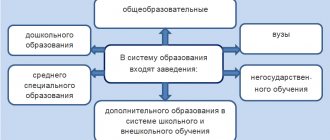Form of employee's absence from work place
If the employee was not present at work, this fact must be documented.
When drawing up the appropriate act to indicate the fact that a subordinate has missed work, it is necessary to listen to the reason for his absence, since he may miss work due to extenuating circumstances. When expelling a subordinate for absenteeism, a completed report of absence from work will be evidence of his absence from work in the event of a trial. Therefore, the form of such an act is of no small importance.
The legislation does not define an approved unified form of such an act. Consequently, the employer has the right to independently develop the form of the act or at the end of this article. The responsibility for drawing up the report is usually assigned either to the head of the violator’s unit or to the personnel officer.
The act is written on a regular A4 sheet in written form.
The form must indicate:
- The name of the company, indicating its details.
- The title of the form, with a description of its number, is “Act No.__ on the absence of...”.
- Place and date of the letter written.
- Position and full name violator, displaying the date and time when he was not at the enterprise.
- Information about the person who filled out the act and about the invited witnesses.
- Signatures of all persons involved in the creation of the act.
After presenting all the information, the violator must sign for familiarization with the act.
Note. Before filling out such a report, it is necessary to request an explanatory note from the subordinate in order to identify the reason for absenteeism. The act is usually drawn up when a subordinate refuses to provide an explanatory note or in the absence of arguments explaining absenteeism.
( Video : “What to do if an employee does not show up and does not answer calls”)
What is considered truancy?
Absenteeism refers to the absence of a working person at the enterprise during the working day without the permission of the immediate superior, if the duration is more than 4 hours in a row (clause “a”, paragraph 6 of Article 81 of the Labor Code of the Russian Federation).
Absenteeism is a gross disregard of labor discipline, and the offender for such a violation may be subject to one of the following penalties, according to Art. 192-193 Labor Code of the Russian Federation:
- Comment.
- Rebuke.
- Dismissal.
The main difference between absenteeism and a simple absence is that the working person usually cannot or does not want to explain the reason for absenteeism.
To impose a penalty on the violator, a basis is required. A formalized act of absence of a subordinate from work without reason is a fact certifying absenteeism, which can become the basis for issuing a penalty order.
Absenteeism without excused circumstances includes:
- Missing a work shift by an employee, regardless of its duration.
- Being late for work more than 4 hours.
- Leaving work without warning your immediate superior.
- Absenteeism from work upon termination of an employment agreement on one’s own initiative until completion of work, or until completion of a fixed-term contract.
- Taking time off on your own.
At the same time, the taking of rest days by an employee cannot be counted as absenteeism if the director of the enterprise unlawfully refuses to allocate such time off (for example, when donating blood).
( Video : “How to punish an employee according to the law - Elena A. Ponomareva”)
Results
Compared to other documents confirming an employee’s violation of work duties, such as reports and memos, the truancy report is the most serious source of evidence when considering the issue of dismissing an employee. Its main feature is the presence of signatures of several people certifying the fact that the employee failed to show up for work or was absent from work for 4 or more hours .
You can get acquainted with other relevant nuances of personnel management in the articles:
- “Nomenclature of affairs of the HR department - sample”;
- “What is the retention period for personnel documents in an organization?”.
You can find more complete information on the topic in ConsultantPlus. Free trial access to the system for 2 days.
What is not considered truancy
Along with the interpretation of absenteeism, legislative norms clearly define the circumstances when the absence of an employee from a company cannot be equated to absenteeism.
This:
- Period of stay in the hospital.
- Being in the examination process, defending a thesis project, etc.
- Inviting a person to judicial or law enforcement agencies.
- Force majeure situations (disasters, climate events, etc.).
- Employee arrest.
- Taking time off when donating blood.
- Other circumstances, if the subordinate has provided relevant certificates.
It is also unacceptable to consider absenteeism if a subordinate does not show up for work if the boss fails to fulfill his obligations, for example, wages are delayed for more than 15 days. At the same time, the employee is obliged to notify his superiors in advance about the termination of work.
Who draws up an employee’s absence from work report?
Usually, the creation of an act on the absence of an employed person from work is carried out either by a personnel officer, or a lawyer (if there is such a position), or the head of a structural department, or, in extreme cases, the secretary of the institution.
To obtain the legal status of a completed letter, you need a specially created commission of company personnel (at least 2 employees), whose members will confirm with their signatures that the offender missed work. The person responsible for the event, as well as the management of the company, must review the completed act in writing.
Subsequently, on the basis of the drawn up act, an order is issued from the director of the company to impose a penalty on the subordinate for absenteeism.
The act must be drawn up no later than a month after the commission of the offense, otherwise it will not be valid.
Possible reasons
The key problem in how to fire a person if he does not show up for work is proving that the reason for his absence is not valid. Proving this falls entirely on the shoulders of the employer. Whether the reason is acceptable or not is also decided by the employer, since there are no such criteria in the Labor Code.
If there is no proof of valid reasons, then you can already think about how to fire an employee if he does not go to work. However, it is not recommended to start this procedure before the state of affairs is really clarified, since the dismissed person can go to court and win it. In his place, you can temporarily hire a person on a fixed-term contract with the appropriate mark.
When is it necessary?
According to the Labor Code of the Russian Federation, every employee is obliged to comply with the daily routine at the enterprise and labor discipline.
Any absence, tardiness or early departure from work is regarded as a violation of work regulations. For such violations, the employer has the right to punish the employee by imposing a penalty in accordance with clause 5.6 of Part 1 of Art. 81 Labor Code of the Russian Federation:
- Announce a remark.
- Reprimand.
- Fire you from your job.
At the same time, the absence of a subordinate cannot always be counted as absenteeism, with appropriate punishment. If there is a bias, the court will cancel the order of the director of the company to impose a penalty on the subordinate. Therefore, when a subordinate misses work, you first need to deal with the circumstances of the absence, that is:
- Take steps to find an employee.
- Record the fact of absence in the report card.
- Request an explanation from the violator.
- In the absence of substantiated arguments, write an act of not being present at work.
- Write a report to the director about the violation.
And only if the listed measures are available, the director of the enterprise has the right to issue an order to impose a penalty on the offender.
How to correctly draw up an employee’s absence report from the workplace in 2021
The act of allowing a subordinate to work does not have a standard template, so it can be drawn up either in a free style or according to a sample established by the management of the enterprise.
The document can be prepared either on letterhead or on a standard blank A4 sheet. The form is written in 2 copies, one for the employer, the second for the offender. Both copies must be signed by the commission members and the offender.
The act must include the following information:
- Details of the company where the offender works.
- Form title.
- Place and date of creation of the act.
- List of commission members indicating absence from work.
- Link to the offender’s explanation of the reasons for absenteeism (if provided).
- Signatures of the commission members and the culprit.
The statement of the act is carried out in compliance with the rules of office work and there should be no difficulties when filling it out.
The “header” displaying the name of the institution and the title of the document is filled in the middle (at the top of the sheet).
Below, on the left, the locality is noted, and in the same line on the right - the date of execution of the act.
Then a list of commission members is presented, with a description of the positions of the participants and their full names.
In the next paragraph, the details of the violator are filled in, indicating their position and full name.
Next, you need to clearly state the exact date and time of absence from work, displaying the circumstances by which the offender explains his absence from the company. If there is no explanation, this must also be noted in the document.
Upon completion, all members of the commission and the violator are required to sign the document presented.
Absenteeism is the position of the legislator
According to the current legislation of the Russian Federation, absenteeism means the absence of an employee from his place of work during working hours for 4 hours or more, without warning his employer/boss.
Expert opinion
Oleg Ustinov
Practicing lawyer, author of the website “Legal Ambulance”, one of the co-founders of the “Our Future” foundation.
At the same time, the main feature of absenteeism is the absence of a valid reason or the employee’s refusal to explain his absence.
It is logical to assume that failure by an employee to fulfill his duties in 99% of cases leads to appropriate measures of punishment/influence against the absentee from the direct employer, whose activities/income depends on the proper performance of their official duties by employees.
What to do if an employee refuses to familiarize himself with the act
When finding employment, an employee enters into an employment contract, which sets out the work schedule and rules that he undertakes to follow.
If the obligations assumed are violated, the subordinate may be subject to punishment, including expulsion from work. Absenteeism is a serious disciplinary violation, which may result in expulsion. However, in order to carry out such a sanction, the director of the enterprise must have a justification, that is, the commission of absenteeism must be documented.
Such documentary evidence can be a completed act of absenteeism for no reason. At the same time, the act completed and signed by the members of the commission must also be signed by the violator of labor discipline.
What to do if the violator refuses to sign the executed document and does not agree with the commission’s conclusions?
In this option, the commission is obliged to make a note in the act about the refusal to sign, confirming this fact with the signatures of the commission members. It is also recommended to send the violator a written notification by registered mail about the preparation of such an act.
During the trial, this document will serve as proof that the violator was aware of the execution of the act.
How to file a truancy report in 2021
The process of creating an act has practically no peculiarities and is completely similar to the process of drawing up other business documentation.
At the very top of the sheet (the “header” of the document) it is necessary to indicate the full name of the act, which should, according to the current Russian legislation, “reflect the essence of drawing up the document.” In this case, we write “Employee Absenteeism Report.”
Next, you should indicate the place of creation and registration of the employing organization, as well as the exact calendar date. After this, we enter the details of all members/participants of the specially assembled commission, indicating their positions and full names.
Then, we enter the same information about the truant, that is, about the person in respect of whom the members of the commission are drawing up this document. The next step of the compiler is to prescribe the period of absenteeism (from what time and until what time).
Now, you can list the reasons for absenteeism (in a column or in table form) indicated by the employee.
The final stage of document preparation is its signing by all members of the commission with transcripts, as well as by the truant himself, who thus confirms the fact of familiarization with/agreement with the information established in the content of the truancy act.







